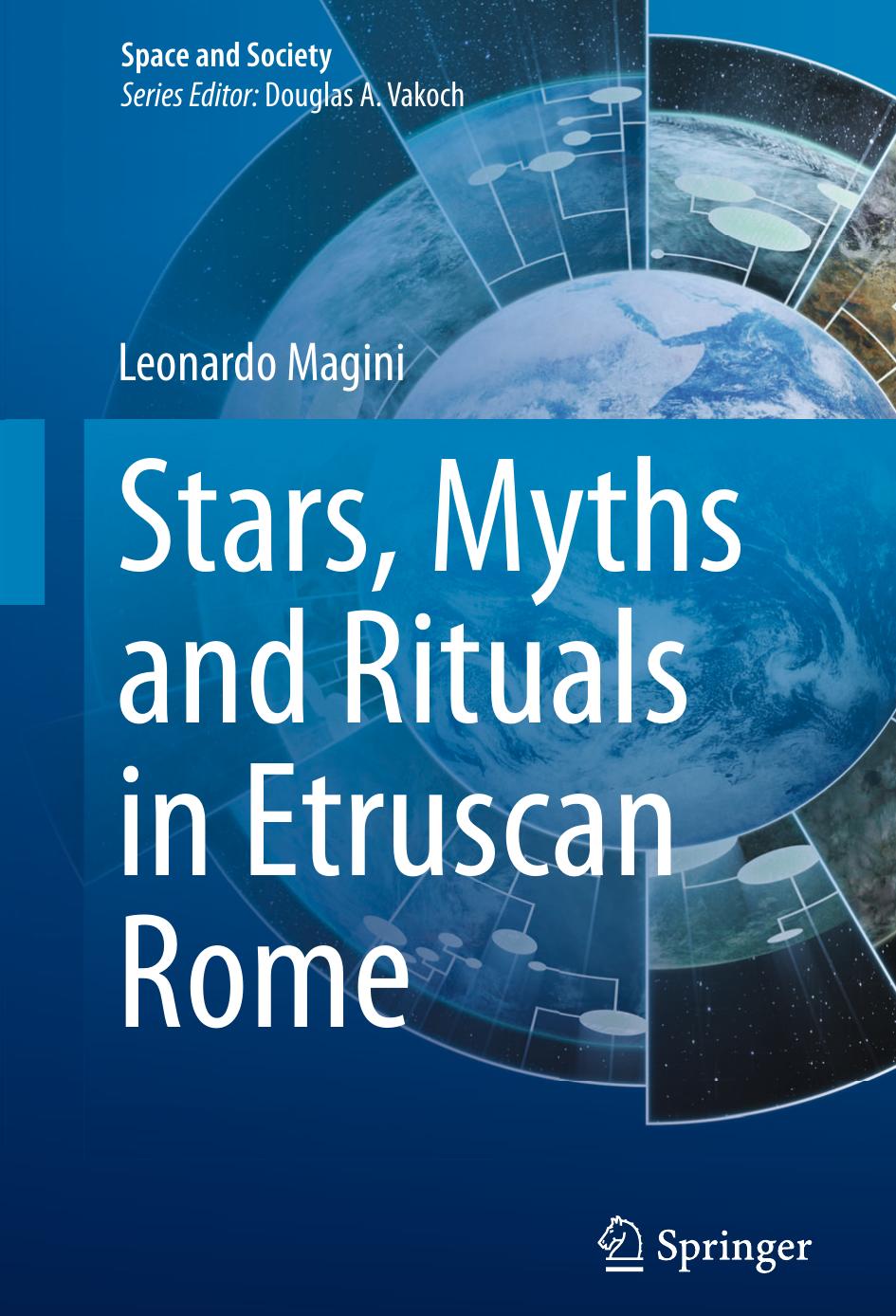Stars, Myths and Rituals in Etruscan Rome by Leonardo Magini

Author:Leonardo Magini
Language: eng
Format: epub, pdf
Publisher: Springer International Publishing, Cham
4 solar eclipses fall at a 2 day interval from a feast day: on 27 July 02, 27 July 11, 27 July 12, and 3 July 13.
In total, 31 (= 10 + 17 + 4) eclipses out of 49 fall on or around Feriale antiquissimum feast days.
Incidentally, two issues should be borne in mind if we are to correctly interpret what these results mean; unfortunately, there is a great deal more to be learned about these two issues, not least the way the transition was made in ancient times from theory to practical application.
The first issue is Etrusco-Roman civilization’s predilection for odd numbers, and its corresponding dislike of even numbers (see Chap. 2). Given this knowledge, we may surmise that even if the calculations reveal that an eclipse fell on an even-numbered day, the corresponding festivity would be inserted into the calendar on the previous or subsequent odd-numbered day.
The second issue regards Etruscan and Roman differences in what is deemed to be the start of the day. Virgil’s commentator informs us: “The day begins at midday for the Etruscans, and at midnight for the Romans.”4 From this, it is clear that what in the modern age is the morning was, for the Etruscans, the last half of the day (and for the Romans the first half of the day); and what in the modern age is the afternoon was, for the Etruscans, the first half of the day (and for the Romans the last half of the day). In other words, for example, our morning of day 7 was already the first half of day 7 for the Romans, whereas for the Etruscans it was still the second half of day 6.
The first of these issues potentially leads to confusion over the roles of even-numbered and odd-numbered days; the second issue may lead to confusion over the role of the first and second half of the day.
If we return to the calculations in Table 15.1, the first 10 eclipses “take up”—if such a term may be permitted −10 days in the calendar; the second 17 eclipses, which fall either one day before or one day after a feast day, take up 51 (= 17 eclipses × 3 days) days; the final 4 eclipses, which falls either 2 days before or 2 days after the feast day, take up 20 (= 4 × 5) days. All in all, the 31 (= 10 + 17 + 4) eclipses take up 81 (= 10 + 51 + 20) days out of the 355 days in the year.
If we compare the 81 days taken up by eclipses during a 355 day year with the 6,585 days in the Saros cycle, we obtain the following ratio: 81 ÷ 355 = 1,502 ÷ 6,585 = 0.228. This means that around 1,502 days are taken up by eclipses in one Saros cycle, making the theoretical probability that an eclipse falls on any given day 22.8 %. And yet the number of eclipses that fall on Feriale antiquissimum days are 31 ÷ 49, corresponding to 63.
Download
Stars, Myths and Rituals in Etruscan Rome by Leonardo Magini.pdf
This site does not store any files on its server. We only index and link to content provided by other sites. Please contact the content providers to delete copyright contents if any and email us, we'll remove relevant links or contents immediately.
| Aeronautics & Astronautics | Astronomy |
| Astrophysics & Space Science | Comets, Meteors & Asteroids |
| Cosmology | Mars |
| Solar System | Star-Gazing |
| Telescopes | UFOs |
Tools of Titans by Timothy Ferriss(7810)
Turbulence by E. J. Noyes(7700)
Astrophysics for People in a Hurry by Neil DeGrasse Tyson(5000)
Secrets of Antigravity Propulsion: Tesla, UFOs, and Classified Aerospace Technology by Ph.D. Paul A. Laviolette(4990)
Design of Trajectory Optimization Approach for Space Maneuver Vehicle Skip Entry Problems by Runqi Chai & Al Savvaris & Antonios Tsourdos & Senchun Chai(4839)
Room 212 by Kate Stewart(4732)
Pale Blue Dot by Carl Sagan(4613)
The David Icke Guide to the Global Conspiracy (and how to end it) by David Icke(4377)
A Journey Through Divination and Astronomy by Publishing Pottermore(4248)
Apollo 8 by Jeffrey Kluger(3512)
Goodbye Paradise(3444)
Losing the Nobel Prize by Brian Keating(3425)
COSMOS by Carl Sagan(3346)
The Five People You Meet in Heaven by Mitch Albom(3334)
How to Read Water: Clues and Patterns from Puddles to the Sea (Natural Navigation) by Tristan Gooley(3239)
Brief Answers to the Big Questions by Stephen Hawking(3239)
How to Read Nature by Tristan Gooley(3077)
The Order of Time by Carlo Rovelli(3073)
A Brief History of Time by Stephen Hawking(2819)
